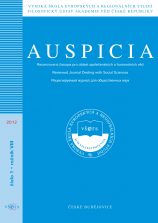Implementation of blended learning in tertiary education of health and social care professionals during Covid-19 pandemic
Implementation of blended learning in tertiary education of health and social care professionals during Covid-19 pandemic
Author(s): Pavel Bluďovský, Vlastimila Ptáčníková, Olga DvořáčkováSubject(s): Education, Higher Education , Health and medicine and law, Distance learning / e-learning
Published by: Vysoká škola evropských a regionálních studií, z. ú.
Keywords: blended-learning; e-learning; implementation; communication; survey;
Summary/Abstract: Blended learning is a relatively new e-learning method that combines traditional classroom learning with computer-mediated instruction. Its roots can be traced back to the 1840s when Sir Isaac Pitman sent tasks to his students on postcards for evaluation. It represents a new way of teaching, employing modern technologies and the online environment, whilst simultaneously emphasizing the importance of traditional teaching methods and personal contact between students and teachers. Blended learning has proven to be an effective way to combine scheduled and self-paced classwork, ensuring its better accessibility and flexibility. This article discusses the implementation and effectiveness of a blended-learning course designed to train communication skills in students studying healthcare-related programmes at the Faculty of Health and Social Sciences of the University of South Bohemia, Czech Republic. The course uses a combination of face-to-face instruction, individual student work, and multimedia online materials. It is divided into modules specific to the student's field of study, such as nursing, nutritional therapy, and civil protection. Each module includes theoretical and practical sections, and the course covers communication skills with seniors, adults, children, and disabled clients. A questionnaire survey was conducted to assess the effectiveness of the course and student satisfaction in order to obtain feedback for further development and improvement of the course. The data obtained from the survey were analysed using descriptive statistics and the Gini index. The results show that the blended-learning course was effective in training communication skills and reducing the number of failures.
Journal: Auspicia
- Issue Year: 2023
- Issue No: 1
- Page Range: 71-85
- Page Count: 15
- Language: English

